All along the Pacific coast, large areas of land including salt marshes and natural salt flats have been replaced by ponds for shrimp farming. In this region, shorebirds move in groups of thousands between the natural wetlands and these productive systems, searching for food and refuge during their annual migration. While using the shrimp farms, shorebirds feed on protein rich invertebrates such as polychaetes, crabs, and mussels after harvest has occurred. The walls and roads are used as rest and refuge areas for a wide diversity of species.
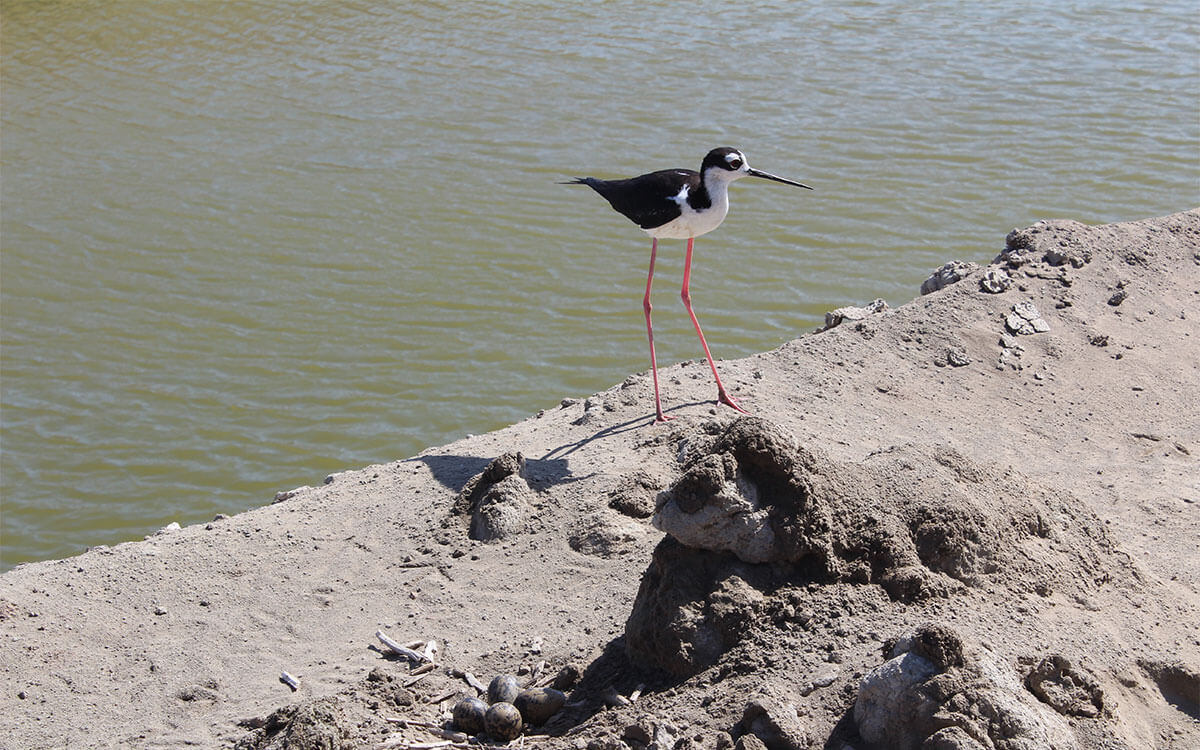
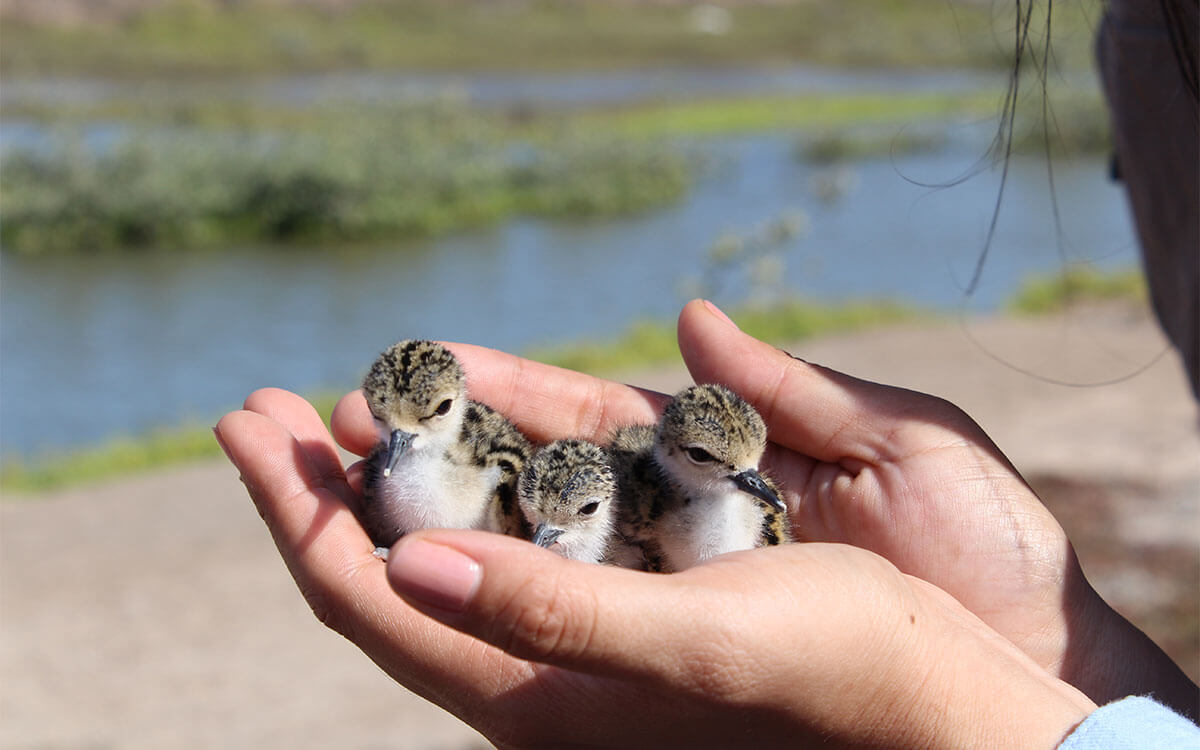
Left: Nest of the Black-necked Stilt at Acuícola Rebeca, México. Right: Chicks of Black-necked Stilt. Photos: J. Fonseca.
Most of these migratory species breed mainly in North America. Nonetheless, constant monitoring of shrimp farms in Mexico and Central America has shown that these habitats are not only important during migration, but also provide breeding habitats for numerous bird species, many of which nest in the marshes and natural salt flats. During the breeding season from April to July it is common to see the Black-necked Stilt (Himantopus mexicanus), a resident and widespread species, nesting on the walls and roads of the shrimp ponds. Generally, they lay four eggs, and as soon as the chicks hatch they leave the nest and are able to run with their parents along the shores of tanks and canals in search of food. Although these chicks feed themselves, they need protection and care from their parents until they can fly and look after themselves.
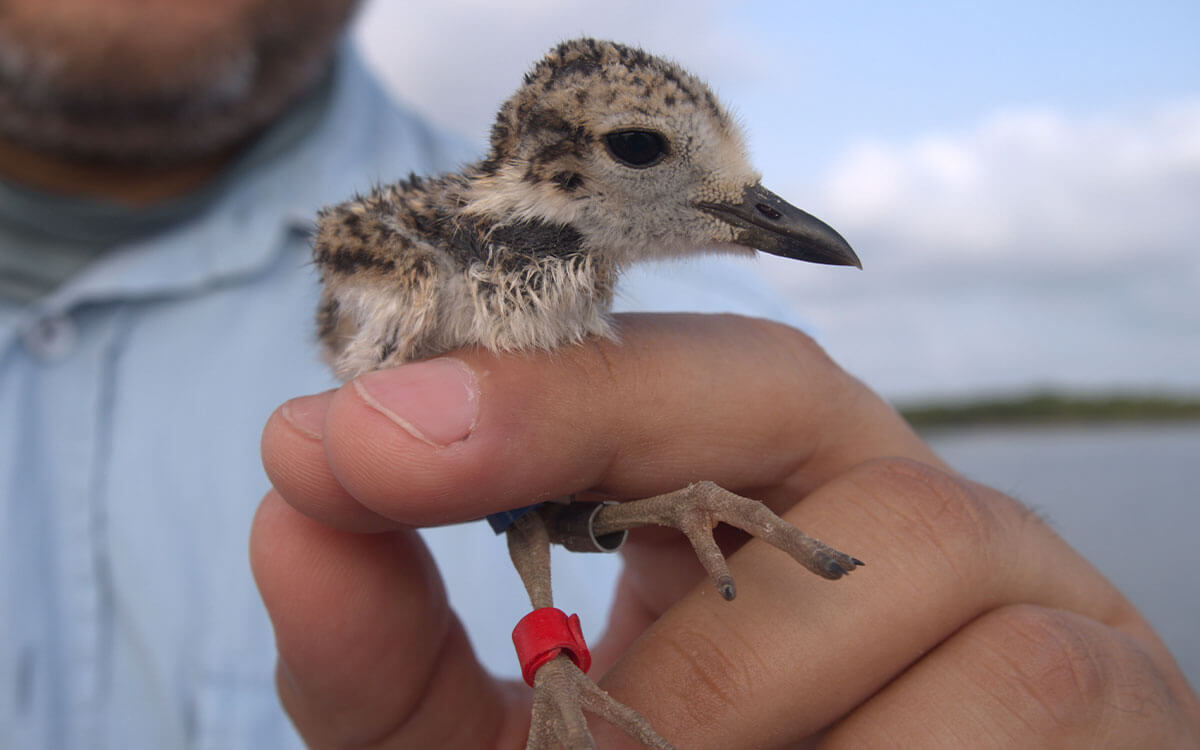
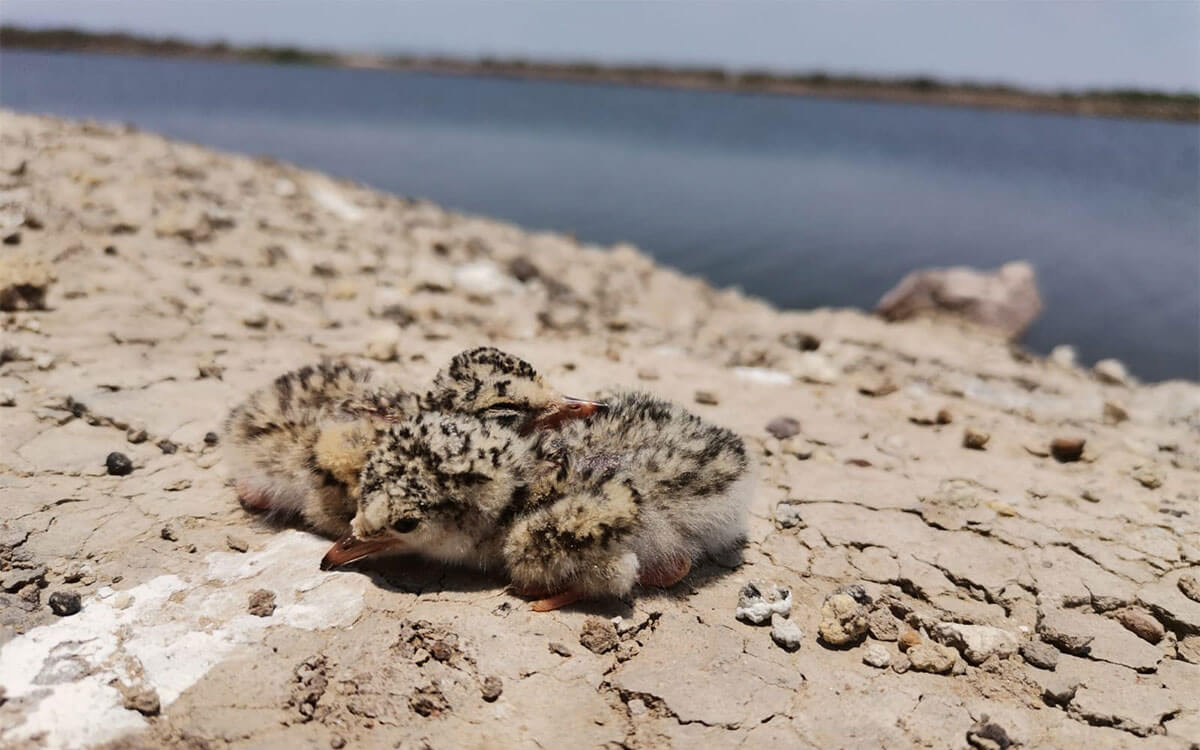
Left: Chick of Wilson’s Plover ringed at Acuícola Don Jorge, Mexico. Right: Chicks of Least Tern resting. Photos: J. Fonseca
Other species such as Wilson’s Plover (Charadrius wilsonia), American Oystercatcher (Haematopus palliatus) and Least Tern (Sternula antillarum) have also been observed nesting at the Ensenada Pabellones and Estero de Urías farms in Mexico. These species are under a certain degree of protection in Mexico and are priority species in the Shorebird Conservation Plans for the United States. As a result, several efforts have been undertaken to conserve these species and their habitats.
During the 2021 breeding season, three families of Oystercatchers were recorded and it was possible to band several of the chicks. After several weeks of being fed and tended to by their parents, they grew into beautiful independent birds. The chicks of plovers are difficult to observe and catch once they leave the nest, as their parents hide them in patches of vegetation or they crouch down to the ground where they remain still and their camouflage plumage helps them escape detection until the danger has passed.
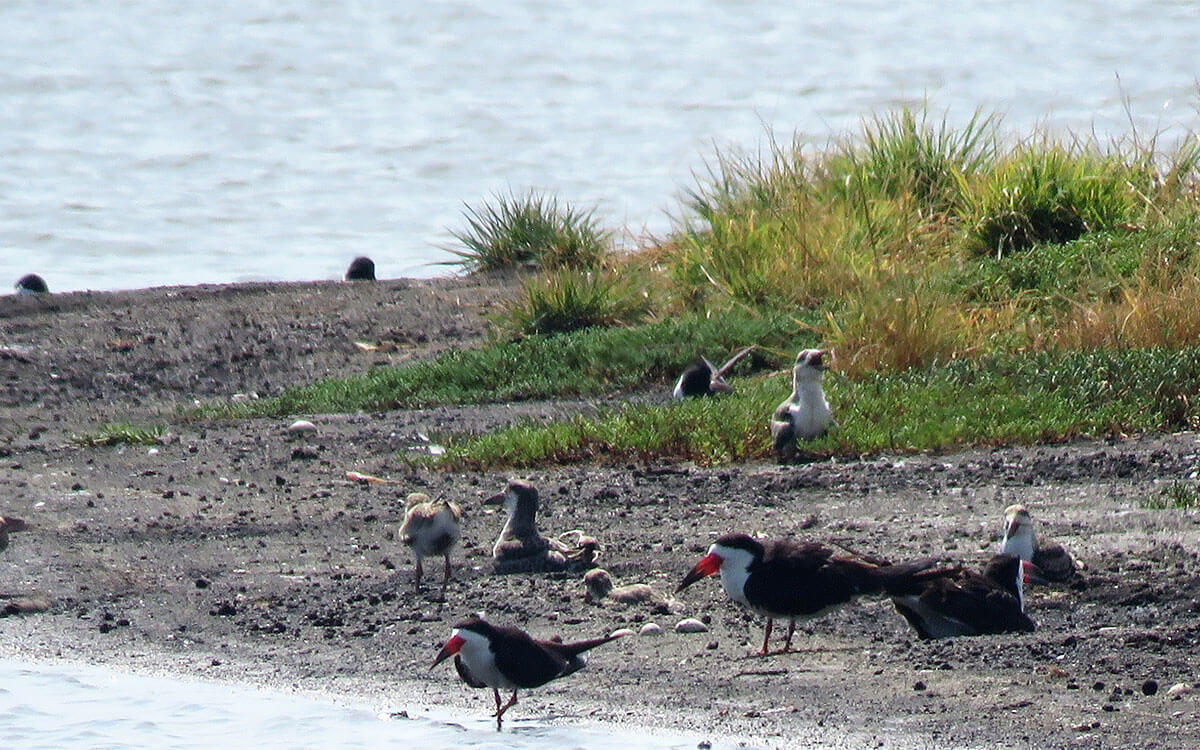
Black Skimmer (Rynchops niger) nesting in a shrimp farm in the Gulf of Fonseca. Photo: Salvadora Morales.
In other farms in the Gulf of Fonseca in Nicaragua, other bird species have been observed nesting, including the Black Skimmer (Rynchops niger), with more than 30 nests located on the walls of tanks. In addition, a reproductive colony of waterbirds has been found nesting in patches of mangroves in one of these farms. Some of the species observed are Roseate Spoonbill Platalea ajaja, Snowy Egret Egreta thula, Reddish Egret E. rufecens, Little Blue Heron E. caerulea, Tricolored Heron E. tricolor, Great Egret Ardea alba, Neotropic Cormorant Phalacrocorax brasilianus, amongst other. These findings show that shrimp farms are not only important for shorebirds, but also for a diverse number of species during the reproductive season.
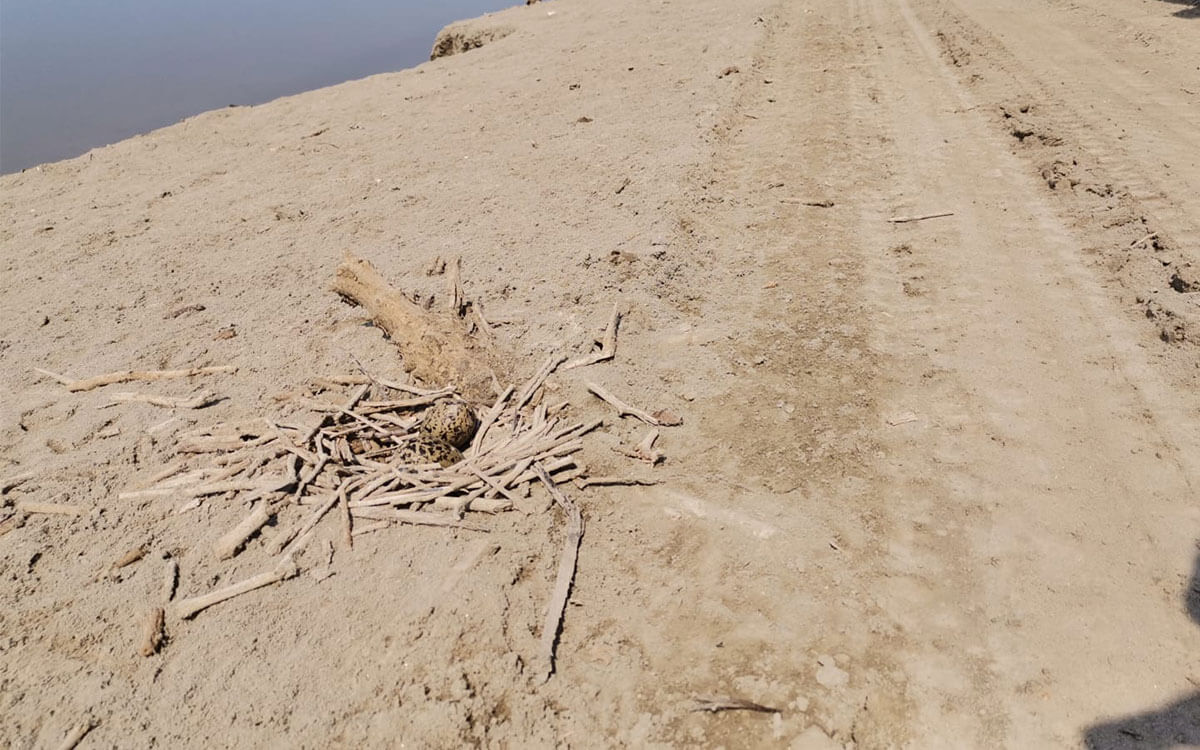
Nest of Black-necked Stilt on a road in the Acuícola Rebeca, Mexico. Photo: Juanita Fonseca.
Because they nest on the ground, these species are very vulnerable to disturbances inherent to production activities, particularly the passage of vehicles required to feed shrimp and carry out controls. The Least Tern (S. antillarum) is perhaps the worst affected, because it nests in small colonies on roads. Ernesto Gómez manager of the Acuícola Rebeca in México, stated that it is common to find chicks running along the roads of the farm, and although they try not to disturb them, they are often very difficult to see. As a result, constant monitoring allows us to locate the nesting sites and assist in the proposal of actions that producers can implement, such as the placement of informative signs and delimitation of the nesting zones. These actions will help to protect the nests and chicks from being crushed by vehicles that circulate around the farm.
The monitoring during the reproductive season in this region, which is combined with the shorebird conservation actions in these productive systems in Mexico and Central America, is carried out within the framework of the Implementation of Friendly Management Practices for Shorebirds in Shrimp-Farms in Mexico Project, part of the Soluciones Costeras (Coastal Solutions) program and is supported by Environment and Climate Change Canada. In the Gulf of Fonseca, this work is possible thanks to the support of the David and Lucile Packard Foundation, the Neotropical Migrant Bird Conservation Act (NMBCA), the International Program of the US Forestry Service (USFS – IP), Environment and Climate Change Canada and the US Fish and Wildlife Service (USFWS).
Cover Photo: Chicks of American Oystercatcher ringed at Acuícola Don Jorge, México. Photo: Juanita Fonseca.






